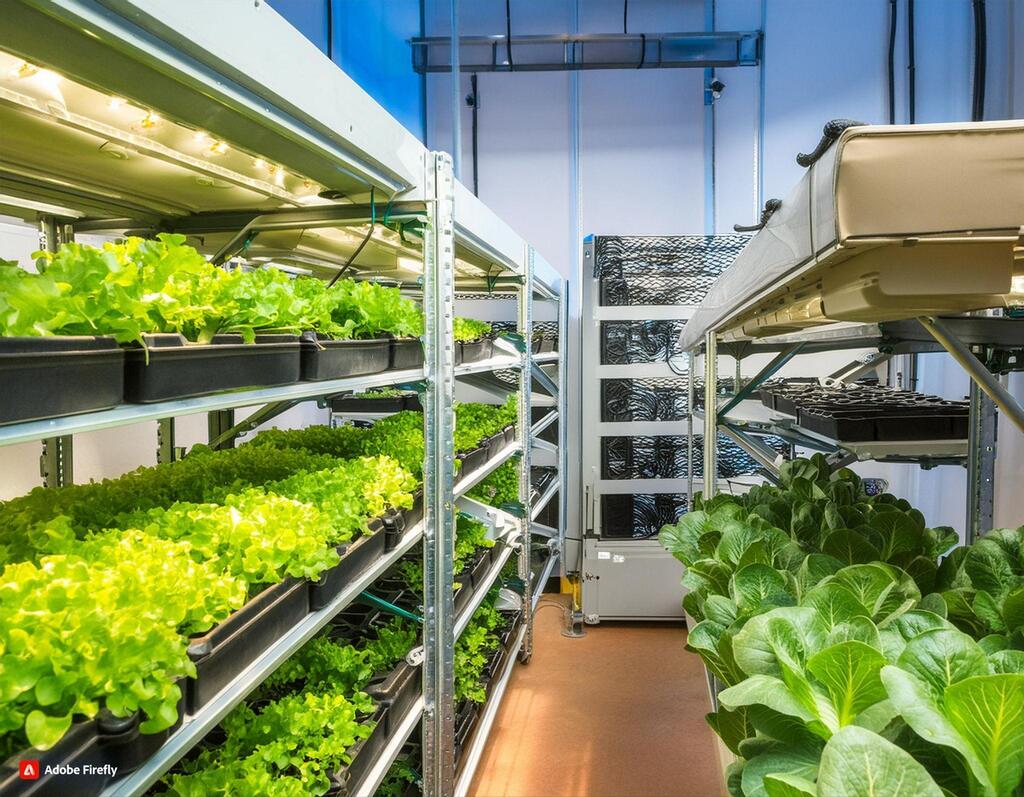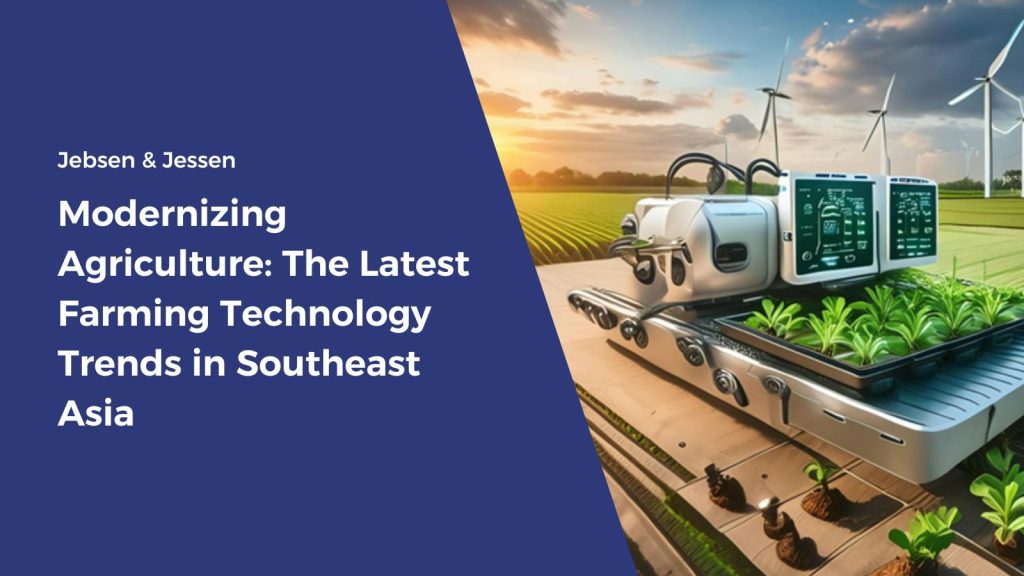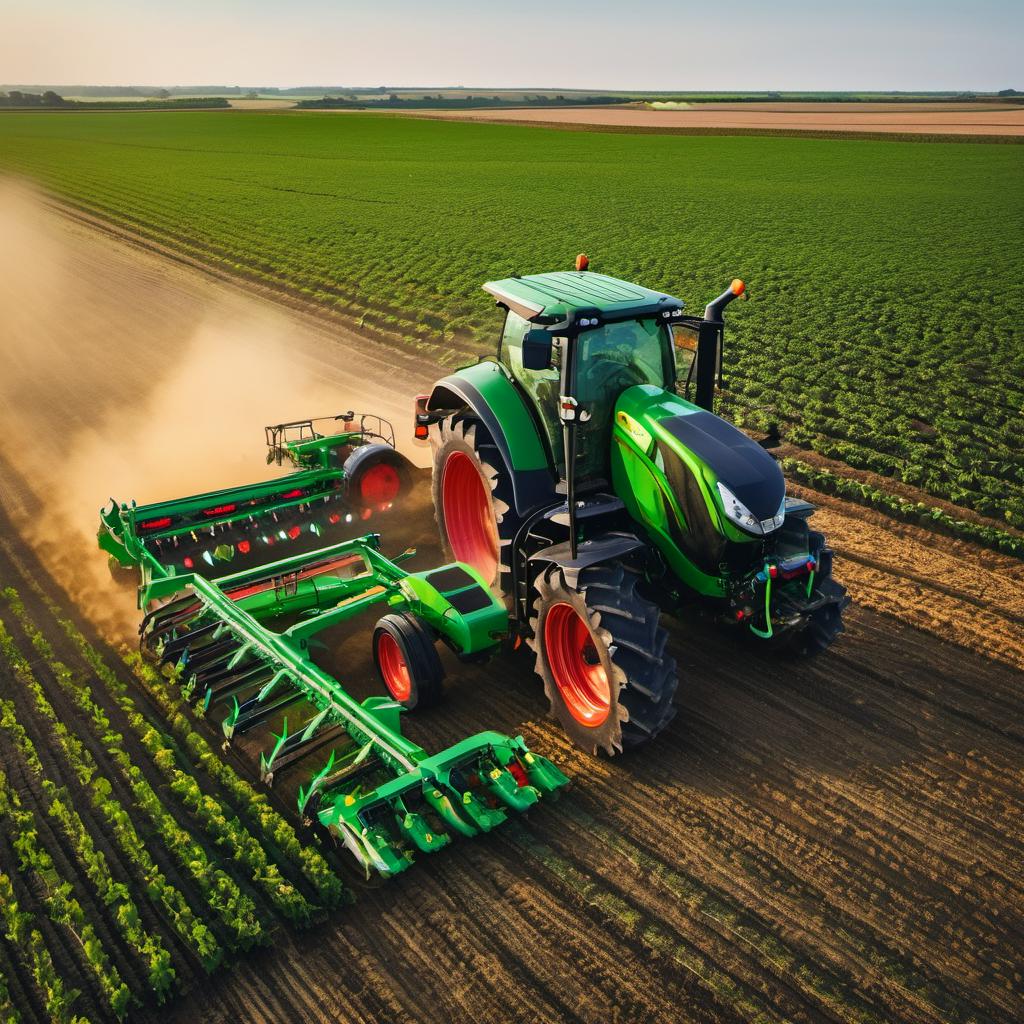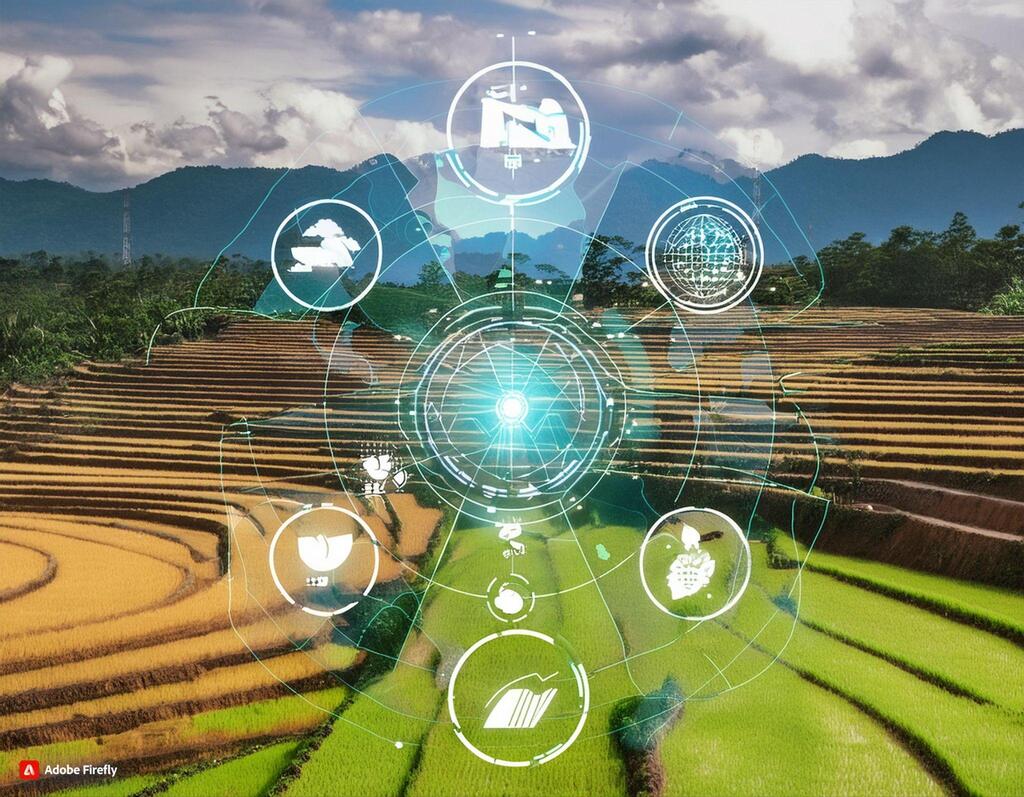Modernizing Agriculture: The Latest Farming Technology Trends in Southeast Asia
Farmers across Southeast Asia face unique challenges that threaten agricultural productivity and food security. Tropical climates, small landholdings, rising labor costs, and water scarcity all constrain farming in this region. To overcome these hurdles, agricultural producers are rapidly adopting innovative new technologies and equipment tailored to the local context. Advanced solutions like precision farming, automated machinery, and vertical farming systems are revolutionizing farming practices in Southeast Asia. By amplifying efficiency and minimizing unpredictability, these technologies help farmers sustainably boost yields to feed a growing population.
Precision agriculture harnesses GPS, GIS mapping, and satellite imagery to help Southeast Asian farmers implement data-driven planting, fertilizing, and harvesting strategies. Together, these precision technologies allow farmers to precisely manage resources, significantly reducing waste while increasing yields by 15-25%.
The Need for Modernization
Southeast Asia faces distinct agricultural challenges. Tropical climates, small landholdings, rising labor costs, and water scarcity all make farming difficult. Additionally, as economies develop, fewer workers are willing to take on the hard physical labor and low wages associated with traditional farming.
Mechanization and automation have become crucial for addressing these issues. Farm machinery can plow, plant, fertilize, weed, and harvest faster and more precisely than human hands. Robust data analytics help farmers deploy resources more strategically. High-tech sensors monitor crop health and soil conditions. Together, these technologies are vital for meeting the region’s food security needs.
Key Technology Categories
Several categories of agricultural tech are gaining prominence across Southeast Asia:
Precision Farming Equipment
Precision agriculture leverages GPS, GIS mapping, satellite imagery, and sensor data to optimize farming practices. Guidance systems allow tractors and other equipment to autonomously till, plant, spray, and harvest crops in perfectly straight rows, reducing overlap and inputs by up to 30%.
Variable rate application technology enables farmers to custom apply fertilizer, pesticides, or irrigation across different zones of their fields based on localized needs, preventing waste. Handheld sensors can instantly analyze soil chemistry, while drones with multispectral cameras create detailed crop health maps, detecting issues like irrigation leaks, pest infestations, and nutrient deficiencies at an early stage.
Thailand’s National Innovation Agency (NIA) has identified seven emerging agricultural technology trends with the potential to transform the country’s farming sector. Recently announced by the NIA’s Agro Business Creative Center (ABC Center), these innovations span the entire agricultural production chain – from farm to consumer.
The goal is to fuse Thailand’s traditional farming knowledge with cutting-edge deep tech and innovation. This will help farmers increase efficiency, sustainability, and profitability while meeting the changing needs of modern food supply chains. Beyond the farm, these trends also aim to stimulate new business models and career opportunities related to the agriculture industry.
The seven highlighted technology trends are
- Agricultural biotechnology, such as gene editing
- Digital agriculture solutions like precision farming and blockchain traceability
- Modern precision farming methods
- Advanced agricultural machinery and robotics with automated systems
- Agricultural business services, including crowdfunding platforms and online marketplaces
- Improved postharvest handling and cold chain transportation
- Biorefinery businesses with biotech-driven food processing
Automated Equipment
Self-driving tractors, robotic harvesters, and other autonomous farm equipment are relieving agricultural workers of tedious manual labor across Southeast Asia. Tractor manufacturers like Kubota now offer auto-steering, auto-logging, and remote monitoring systems that allow farmers to control machines using smartphones and computers.
Some newer models can toil day and night using artificial intelligence to detect obstacles, measure crop ripeness, and even grade fruits by appearance. This automation enables large-scale farmers to operate with smaller labor forces to significantly boost productivity and profits.
Additionally, automated transplanters and weed control machines are taking over back-breaking field preparation tasks that formerly required entire work crews. For example, rice transplanters can cover 15-20 hectares a day compared to just 0.10-0.16 hectares when done manually.
Smart Monitoring Tools
Innovative sensors enable continuous monitoring of temperature, rainfall, wind, soil chemistry, crop growth, and equipment performance. Integrated with GPS, wireless networks, and advanced analytics, this creates an intelligent farm oversight system to help Southeast Asian farmers respond immediately to threats while uncovering long-term patterns and improvements.
Special cameras can spot minute defects and insects and even precisely determine ripeness, triggering picking or harvesting when fruits reach ideal maturity. Smart irrigation systems monitor soil moisture and weather to deliver exactly the right amount of water. Rapid disease detection allows early treatment to avoid decimation of crops like bananas, peppers, and citrus fruits.
Vertical Farming Infrastructure

Indoor vertical farms allow complete control over growing conditions while bypassing weather, pests, contaminants, and space constraints. Crops are grown in stacked layers under optimized LED lighting, climate control, and recirculating hydroponic systems. With farming enclosed in urban warehouses, fresh produce can be grown locally year-round, no longer limited by outdoor growing seasons, long-distance transport, and unpredictable yields.
The ultra-efficient systems use 95% less water than conventional farms while achieving yields over 300 times higher on the same footprint of land. In Bangkok, Siam Green Sky is operating a 6,900 sqm hydroponic vertical farm producing over 400 tons per year of herbs and leafy greens.
Sky Greens in Singapore has specially designed vertical towers that rotate plants through the sunlight for ultra-high density yields. Such indoor farms are crucial for the future food security of Southeast Asia’s rapidly expanding urban centers.
Blockchain Platforms
Blockchain provides a cryptographically secure decentralized digital ledger for agricultural transactions and data. This brings unprecedented transparency across complex supply chains in Southeast Asia. Products can be tracked in real-time from origin through handling, processing, and delivery. Payments also become faster and cheaper without intermediaries.
Smart contracts automatically execute growing agreements and payments once conditions are met, ensuring farmers receive fair compensation. For example, blockchain can be used to connect farmers directly with hotels and restaurants, cutting waste and costs for all parties. With blockchain, all interactions are immutable, tamper-proof, and visible, which improves trust.
Global and Regional Analysis
The adoption of blockchain technology in agriculture and food systems is accelerating rapidly according to industry analysis. BIS Research predicts that the global blockchain market in agriculture and food will skyrocket from $189.5 million in 2020 to $1.49 billion by 2026. This represents a massive compound annual growth rate (CAGR) of 51% over the forecast period.
The key driver behind this growth is the pressing need for greater supply chain transparency and traceability within the food industry. In recent years, an alarming rise has been observed in high-profile foodborne illness outbreaks and contamination cases. Blockchain’s ability to securely track the provenance of ingredients from farm to fork provides a solution.
By digitally logging and sharing each step of the production process across a decentralized network, blockchain builds trust and accountability between suppliers, producers, and consumers. The technology helps quickly trace sources of contamination to limit the spread of foodborne diseases. Meeting consumer demands for ethically sourced, safe, and sustainable food is also easier with the transparency that blockchain facilitates.
Impact on Farming Practices
The influx of advanced agricultural technologies is fundamentally transforming traditional farming practices across Southeast Asia. These innovations are bringing profound benefits that make adoption extremely appealing despite the initial investment required.
Boosting Efficiency
Precision agriculture, automated equipment, and smart monitoring tools are helping farmers dramatically amplify productivity and yields while using fewer natural resources and labor. For instance, automated irrigation systems have enabled South Korean rice farmers to improve water efficiency by 12.7%, crucial in areas facing seasonal droughts and shortages. GPS-guided farm machinery alone can reduce fertilizer and fuel usage by 25-40% through optimized routing and input distribution. Robotic harvesters work around the clock, multiplying output. Sensors identify exactly where and when crops need inputs, preventing any waste. Farm overseers now have the data to micromanage operations for peak efficiency.
Advancing Sustainability
Modern equipment is enabling much greener agricultural practices. Precision systems apply only the minimum amount of chemicals needed, avoiding runoff pollution. Specialized sensors reduce water usage substantially by irrigating based on actual plant needs. The enclosed, controlled environments of vertical farms recirculate water and nutrients in closed-loop hydroponic systems. Their urban locations near consumers also shrink transportation emissions substantially. Overall, technology is empowering more sustainable techniques.
Driving Productivity
Mechanization, automation, and always-on indoor vertical farming are overcoming limitations on growth previously imposed by seasonal labor shortages. Robotic machinery alone can multiply yields on rice and produce farms several times over. Meanwhile, climate-controlled vertical farms offer consistent year-round harvests immune to pests, disease, and weather. This boost in productivity is crucial for feeding Southeast Asia’s growing population.
Data-Driven Decisions
Sophisticated IoT sensors across farm operations are generating rich real-time data on soil chemistry, crop development, equipment performance, weather patterns, and more. Processing this via analytics software gives farmers unprecedented insights to make smarter decisions, maximizing yields. Issues can be rapidly detected and addressed before causing major damage. Over time, patterns emerge for optimized planting schedules, watering, fertilization, and harvesting.
Higher Quality
Precision agriculture and controlled growing environments produce more consistent, higher-quality crops. Targeted watering and fertilization optimized for each plant prevent irregularities. Carefully monitored conditions reduce spoilage and defects. Automated grading and sorting of harvests ensure only the best crops reach consumers, raising both nutritional value and satisfaction.
Greater Resilience
Data-driven farm management using advanced sensors enables early detection and mitigation of potential threats from pests, disease, overheating, drought, and more. Farmers can take quick actions to avoid losses when issues first arise. Meanwhile, indoor vertical farms offer protection from climate change impacts like extreme weather, allowing year-round production stability. Technologies boost farms’ resilience and long-term viability. Drones with multispectral cameras help strawberry growers in Malaysia rapidly identify pests and diseases before they devastate crops. Last season, one farm detected and treated a nematode infestation early, saving over $300,000 worth of strawberries.
As Southeast Asia continues to adopt advanced solutions like precision agriculture, automated equipment, and indoor vertical farming, the agricultural sector is primed for a technology-driven transformation. By embracing innovation, farmers can overcome local challenges and establish regional leadership in smart, sustainable agriculture. The future promises enhanced productivity, profitability, and food security.
Key Industry Players
Many large machinery companies now offer specialized equipment tailored for Southeast Asian smallholder farms. Some leading brands include:
- Jebsen & Jessen: A key distributor in Southeast Asia for leading brands like Toro turf equipment, supplying innovative solutions for turf management, irrigation, vehicles, fertilizers, and more.
- Kubota: A Japanese brand that produces tractors, rice transplanters, and other machinery that matches the region.
- Yanmar: Another Japanese company that manufactures affordable machinery for Southeast Asian conditions.
- John Deere: The US tractor giant has introduced automation, GPS upgrades, and data analytics services.
- Toro: Known for irrigation tech, Toro is expanding into equipment automation and turf management tools in Asia.
- Yamaha: Best recognized for vehicles, Yamaha also produces capable multipurpose farm equipment optimized for Southeast Asia.
There are also promising homegrown agriculture technology startups gaining traction in the region:
- Mertani: An Indonesian startup that develops an automatic weather station using various sensors to monitor environmental parameters.
- EFishery: An Indonesian company selling automated fish-feeding tech using IoT sensors.
- Aruna: An Indonesia-based startup building solar-powered boats for fishing villages to improve catches and safety.
Tips for Adopting Agricultural Technologies
- Assess your needs: Consider your farm’s specific challenges, resources, and objectives. This will help determine which technologies are most strategic to implement.
- Start small: Pilot new equipment or methods on a limited scale first to evaluate effectiveness and suitability before expanding usage.
- Seek expert guidance: Consult local agricultural technology specialists for training on best practices, proper use and maintenance.
- Opt for flexibility: Consider equipment sharing arrangements with neighboring farms or machinery rental options to test solutions without major up-front costs.
- Leverage financing: Explore government subsidies, low-interest loans and other programs that can ease adoption of capital-intensive technologies.
- Focus on scalable solutions: Prioritize innovations that can be easily expanded to cover more acreage as value is proven.
- Implement systematically: Develop a phased rollout plan for new technologies to smoothly integrate within existing operations.
- Collect and analyze data: Leverage sensors, imagery and analytics to maximize the value of new technologies by generating actionable insights.
- Enhance skills: Invest in developing the technical capabilities and digital literacy of farm managers to use new innovations effectively.
With the right strategic approach, agricultural technologies can transform Southeast Asian farms. Careful planning and expert support will ensure successful adoption.
The Future of Agriculture in Southeast Asia
Agriculture technology will be integral to Southeast Asia’s goal of food security and sustainable development. Already, policymakers in countries like Thailand, Malaysia, and the Philippines actively promote tech adoption to boost productivity and self-sufficiency.
We can expect to see continued rapid innovation and uptake in equipment automation, indoor vertical farming, blockchain platforms, drones, and data analytics. Investments in 5G connectivity and the Internet of Things will further integrate advanced technologies across the region’s farms.
As this new wave of ag-tech becomes more affordable and widely used, Southeast Asia will solidify its position as a global leader in smart, efficient agricultural practices. Farmers will reap the benefits through more profitable and sustainable operations, while consumers gain access to fresher, safer, higher-quality foods. The future certainly looks bright for agriculture in this high-growth region.



